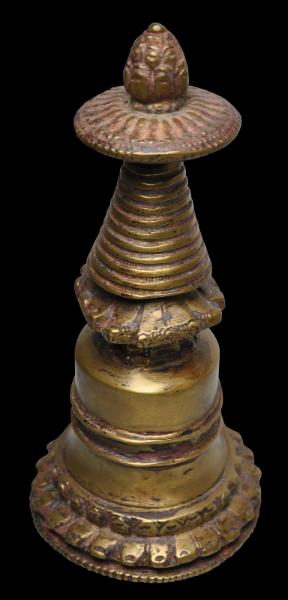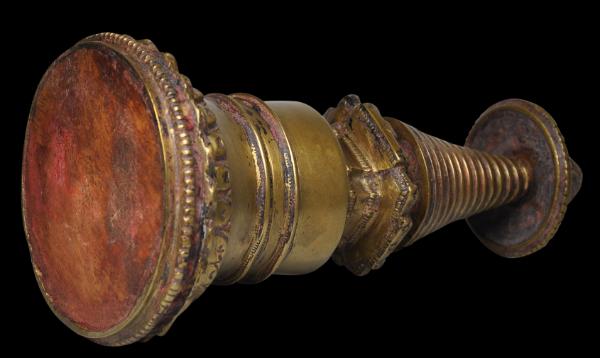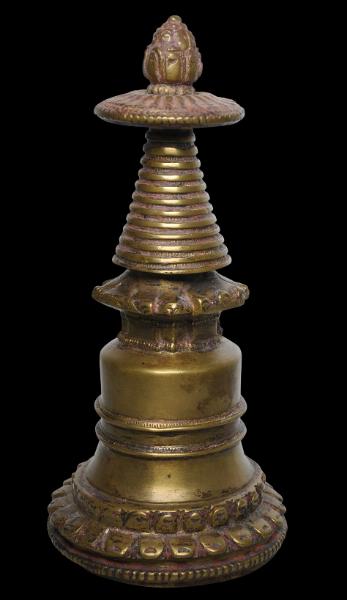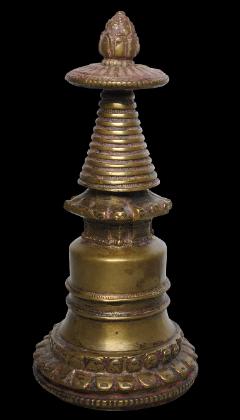
Tibetan Brass Chorten
Larger Brass Kadam-style Chorten Tibet
15th-16th century
height: 21cm
This cast brass Tibetan stupa or chorten has a lotus petal base; bell-shaped body; cruciform or mandala-shaped entablature (or harmika); and an upper section of thirteen ribs to represent thirteen graduated parasols, topped with a circular lotus petal platform surmounted by a lotus-bud finial. Edges are variously beaded. The base is closed and filled with a wooden plug which has age, but is a later replacement. The contours of the piece are rounded from years of handling. The crevices are encrusted with red powder remnants.
Such stupas are meant to symbolise the Buddha’s enlightened mind. Many are also meant to hold offerings and precious relics. Tibetan stupas of this form are associated with Atisha who came to Tibet from India in the eleventh century and founded the Kadampa sect, and it is with members of this sect – the Kadampas – with whom this style of stupa is most associated. The form, in Tibet, dates back to at least the twelfth century.
According to Heller (2008, p. 156) such stupas frequently were installed on the altars of many Tibetan monasteries from Ladakh to Eastern Tibet. Most were designed to hold consecrated items including small images of a lama or the Buddha.
References
Heller, A.,
Early Himalayan Art, Ashmolean Museum, 2008.
Lipton, B., & N.D. Ragnubs,
Treasures of Tibetan Art: Collections of the Jacques Marchais Museum of Tibetan Art, Oxford University Press, 1996.
Pal, P.,
Art of the Himalayas: Treasures from Nepal and Tibet, Hudson Hills Press, 1991.
Provenance
UK art market
Inventory no.: 1990
SOLD





